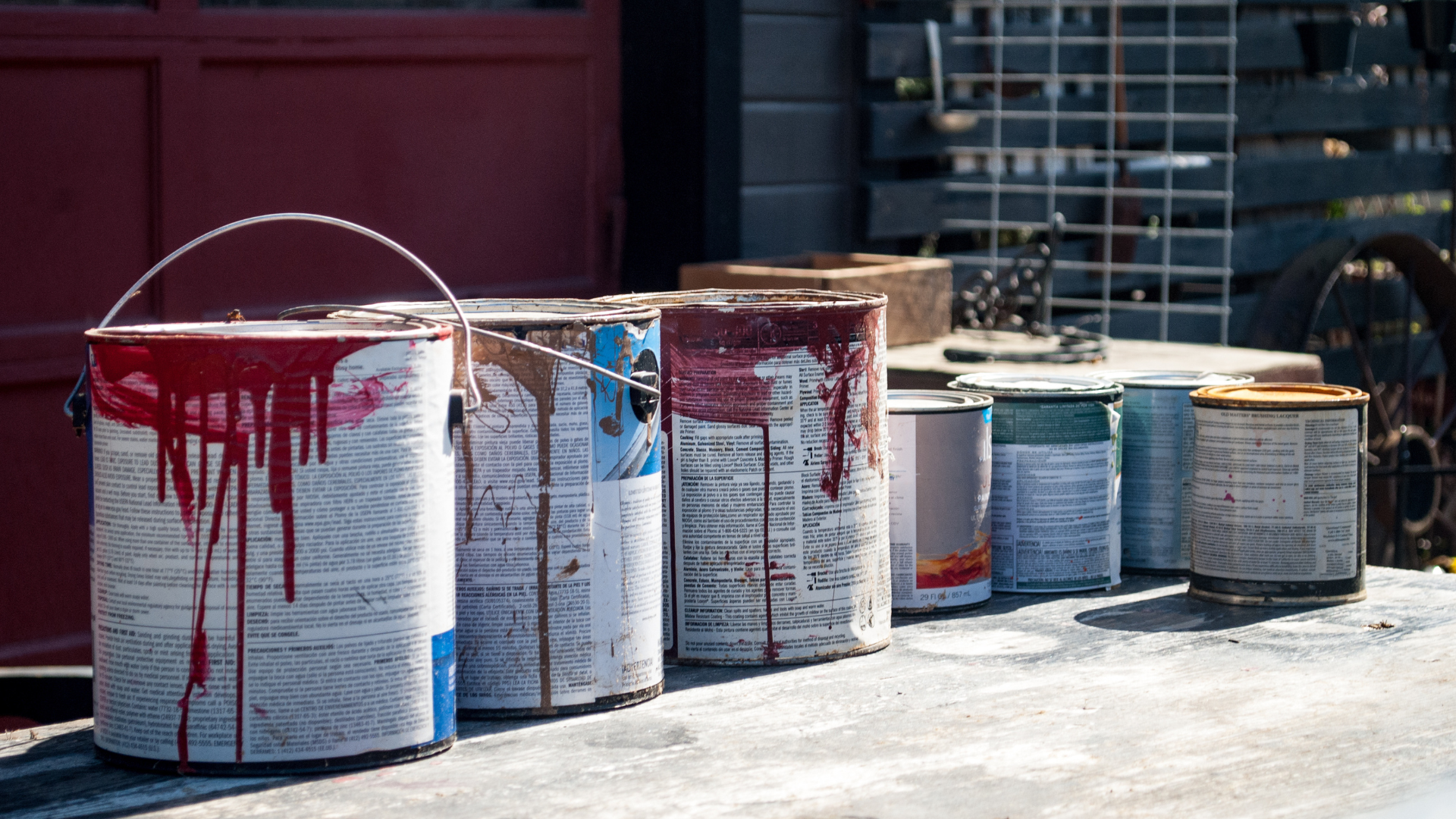We may earn a commission from links on this page.
If you’ve ever painted a room in your house or apartment, you know the pain of storing leftover paint. You pour the excess from the rolling pan into the paint can, you tap the lid back into place with a hammer, and you stick the old can somewhere out of the way, where you promptly forget about it. Then the day comes when you need to touch up the room or repaint it entirely, and you haul that old can out from its hiding place, only to discover that time has not been kind to your paint.
If your old paint hasn’t aged well—it’s skinned over, chunky, or otherwise dubious—but you really don’t want to spend money on a fresh can just to do some touch up work, you can try to revive the paint. This happened to me recently: I had an old five-gallon bucket of gray paint with about a gallon of paint left in it, and when I opened it up, it looked like this:
Credit: Jeff Somers
But I didn’t want to run out to buy a fresh gallon for a small job, so I decided to bring this paint back to life.
First, a few quick caveats: Not all paint can be brought back to life. It needs to be mostly liquid, even if it’s chunky and skinned over—if it’s totally hardened, just toss it in the trash. A few other things to check for:
Mold. If you open the can and it smells like mildew (or worse) or has a growth on it, it’s not usable—even if you mix it up and get it into usable shape, you will be painting mold spores onto your walls. While modern paints typically contain biocides to inhibit mold growth for years, various climate conditions or storage variables can impact their effectiveness.
Thinned. If you have already thinned the paint with water (for water-based paints) or paint thinner (for oil-based paints), you probably won’t be able to bring it back.
Frozen. If the paint froze at any point, it’s probably done for. Paint that froze up will have a “cottage cheese” texture to it.
If you see these signs, toss the paint and resign yourself to buying a fresh can. Otherwise, come with me on a paint-resurrection adventure.
How to revive old paint
My paint had never been thinned, and while it was chunky, it was still liquid. It didn’t smell bad, so I thought I had a pretty good shot at bringing it back. Here’s what you need on hand to try this:
Credit: Jeff Somers
Bucket. This is where you’ll collect the revived paint.
Screen. You can buy disposable paint filters or paint filter bags, but you can also use an old aluminum window screen, or a piece of fiberglass screen. I happened to have a bunch of fiberglass screen left over from another project, so I cut a piece of that.
Drill with paddle bit. You can stir the paint manually, but it’s a lot easier to get a paddle attachment for your drill.
Paint thinner. If your paint is water-based, you can thin it with some warm water. Mine is oil-based, so I need paint thinner—I had mineral spirits on hand, so I used that.
Painter’s tape. Any tape at all, really, but painter’s tape is easiest to work with here.
Once you have all your materials, your first step is to thin the paint a little. Add a small amount of water or paint thinner, then stir the paint, starting off at a low setting and increasing the power gradually.
Credit: Jeff Somers
Credit: Jeff Somers
This should eliminate the worst of the chunks in there. How much to thin the paint is more art than science—you don’t want to over-thin it and make it watery. I didn’t try to eliminate every single chunk of hardened paint and was very conservative with the thinner. You can always add a little more and repeat the stirring, but you can’t remove excess thinner after you’ve poured it in.
Next, you screen the paint. Attach your screen to your bucket—in my case, I just wrapped the fiberglass screen around the lid and taped it into place:
Credit: Jeff Somers
Then, I poured the partially thinned paint into the bucket through the filter:
Credit: Jeff Somers
I let the paint drip through the filter for a few minutes. This screened out the remaining chunks, leaving me with a supply of usable paint in my bucket:
Credit: Jeff Somers
I didn’t need much; honestly, if you’re going to repaint the whole room, you probably shouldn’t rely on old paint you’ve thinned and screened. But for a small touch-up job, this spared me from having to run out and buy a fresh can of paint. It worked well, the paint adhered without problems and matched up reasonably well with the old coat. I plan to prime and paint the room again next year, so it doesn’t have to last forever, either. Once I was done, I disposed of the remnants at my city’s recycling center so it’s no longer haunting my closet.
